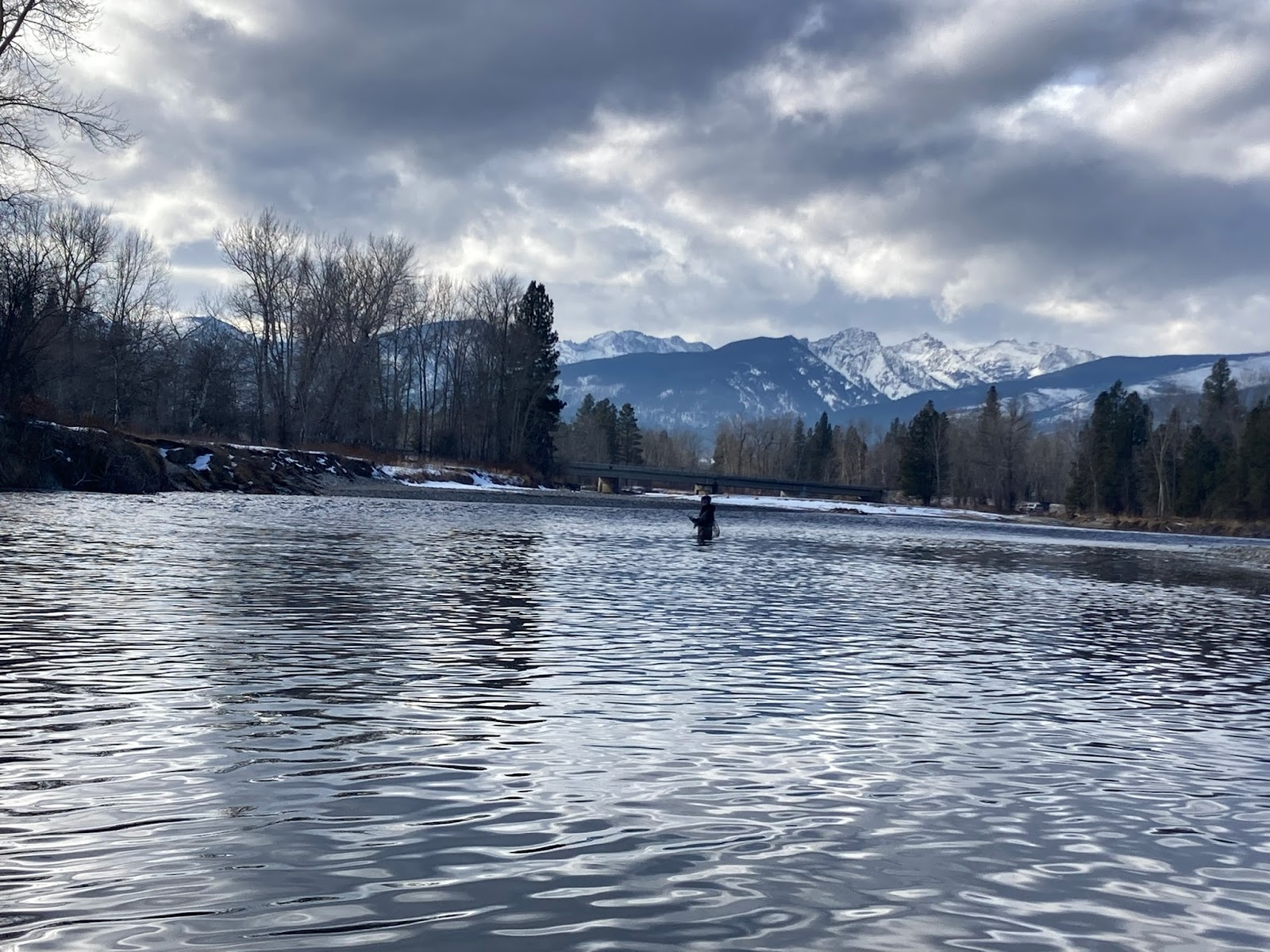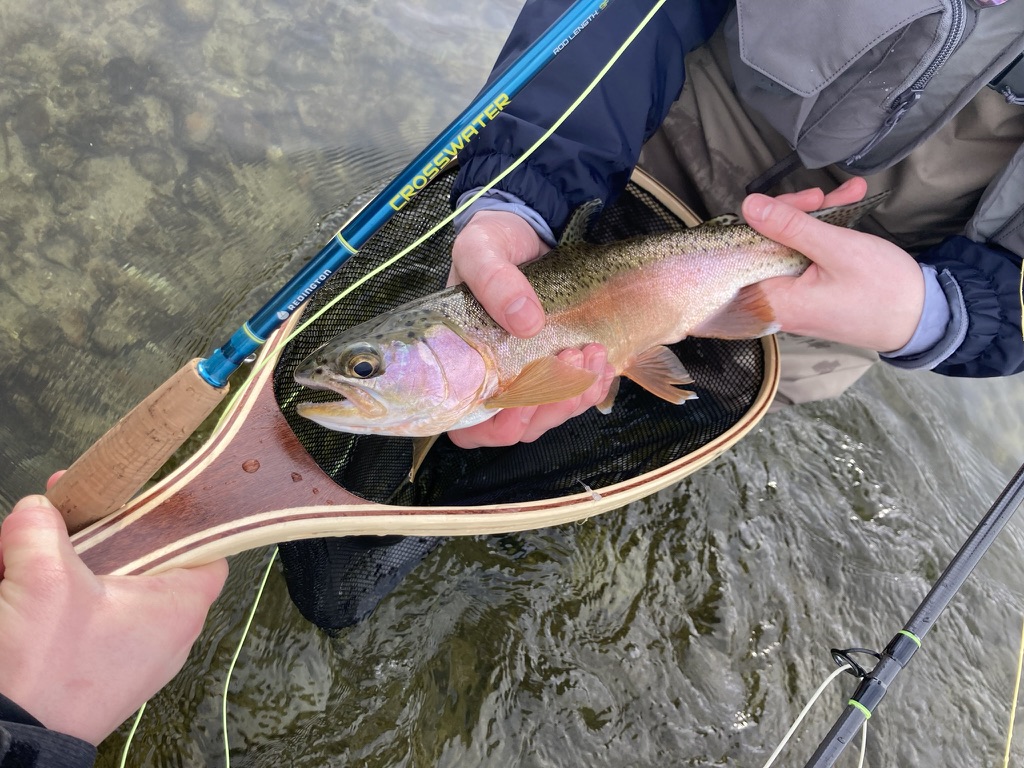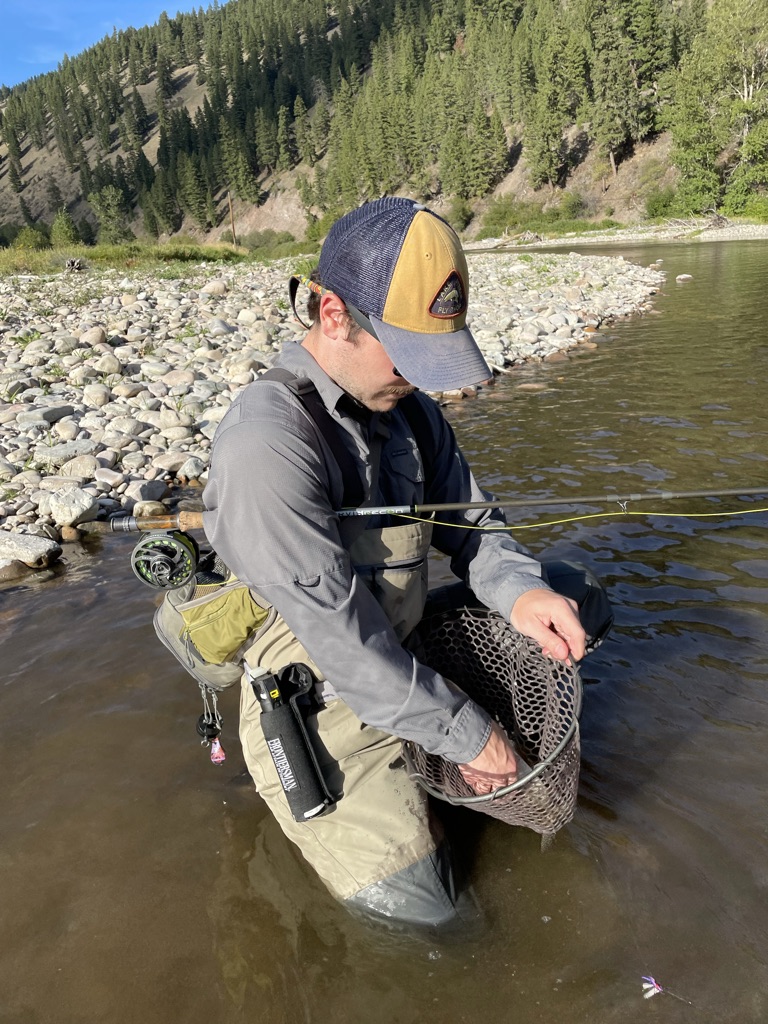Christmas is officially right around the corner, and you still don’t have presents sitting under the tree. We have all been there; waiting until the last moments of December to finally complete our Christmas checklist. In fact, I’m currently writing this blog to procrastinate buying presents for my loved ones. Never mind that. This blog is about you, not me. Anyways… To complicate matters, the person who you are buying for is a fly angler. With all their gizmos, gadgets, sharp hooks, and feathers, it can be very difficult to navigate the fly fishing gear world, especially for someone completely disassociated from the sport. To solve this conundrum, I have compiled a list here based on general price points to help guide your Christmas shopping, without getting lost in all the complexities of fly fishing equipment.
DISCLAIMER: Although I have attached hyperlinks for shopping convenience, I would HIGHLY RECOMMEND that you check out your local fly shop beforehand for the items listed. Nothing compares to the knowledge, service, and care these shops provide. The holiday season is an extremely important time for these small businesses, so please do your due diligence and give them the support they deserve this Christmas.
Please see the following links to a few of my personal favorite shops and small businesses:
Tight Lines Fly Fishing Company: https://tightlinesflyshop.com/
Rock Creek Fisherman's Mercantile: https://rcmerc.com/
Blackfoot River Outfitters: https://blackfootriver.com/
Grizzly Hackly Fly Shop: https://grizzlyhackle.com/
Missoulian Angler Fly Shop: https://www.missoulianangler.com/
True Water Fly Shop: https://truewatermt.com/
Blue Line Co.: https://www.bluelineflies.com/
Price Point: $1-$15
Look, sometimes you just need that perfect stocking stuffer or something easy for a friend at a Christmas party. Maybe this is part of a larger gift bag or something fun and simple for a work colleague! Any gift goes a long way, and these gifts are bound to please a fly fisher in more ways than you might expect.
All fly fishermen love stickers. Applicable to car windows, Yeti coolers, Thules, water bottles, etc.
This is the name of the game in this sport. If you don’t know what to get, I would recommend that you visit your local fly shop to ask them if they can help you pick a small handful of “winners” AKA flies that work. Remember to shop within your budget. These flies may be small, but they add up fast!
When choosing a tapered leader or tippet, it is helpful to know what species of fish your angler likes to target. Line strength is measured in lbs using an X formula. If you know the species, a quick online check will suffice. 4x or 5x are great for most general trout applications.
Scientific Angler,
Rio, and
Orvis are good brands.
- Strike Indicators (bobbers)
Does your fly angler catch a lot of fish? This is because they prefer to fish with nymphs. Get them a bobb- I mean
strike indicator.
Best brand is Oros, I would go with them.
Price Point: $16-30
As we approach the next level of fly fishing gifts, keep in mind that previous gifts can simply be multiplied to attain your desired price point. If the following gifts are not your speed, then maybe a combo of the previous gifts will make for the perfect Christmas present. Fishing equipment is constantly broken, worn down, or lost, so multiples are typically not a concern for fly anglers.
Anglers love to rep their water, and what better way to show your roots than by sporting a shirt or hat from your local fly shop. This is an awesome gift that supports small businesses while fulfilling your angler's innate desire to prove they fish in the area.
This is a fantastic gift idea (not to mention my personal favorite) for fly anglers of all experience levels. Typically, mystery boxes include a randomized mixture of flies, with an additional surprise such as stickers, leader, floatant, etc. Popular grab n' go boxes are the
PostFly Fly Fishing Kit, or
Blue Line Co. Holiday Gift Bundle.
Price Point: $31-60
This next level of fly fishing gifts begins to shift from light gear and apparel to performance items. These items may be used more purposefully, and are great gifts for anglers in need of an upgrade or replacement.
Fishing nets come in a variety of price points, but for most fly anglers a
net of this caliber offers the best mixture of quality and durability to fit their needs. A preferable netting should be rubber material, versus mesh. If your angler currently has a mesh net, this is a great opportunity to upgrade their net from one that snags hooks, hurts fish, and tears, to a more durable one that catches and releases fish safely and effectively.
Vests allow the angler to comfortably carry flies and gear to the river. Transporting equipment to the river can be a hassle, and
a good vest allows an angler to conveniently switch flies or swap set-ups on the go.
Price Point: $61-100
Okay, I realize this is a big price jump with a wide range. But as the price point increases, there is quite a bit of price variability per item. To help simplify this, I am going to continue to highlight products I believe are valuable and cost-effective.
Hood or no hood, these shirts work magic for the angler facing the elements. Sun shirts prevent sunburn and eliminate wind harassment, creating the perfect armor for avid fishermen. For the best quality, in a budget-friendly package, I strongly recommend
Columbia PFG shirts. For the best all-around performance and comfort, I would recommend
Free Fly sunshirts.
I am of the opinion that fly line is often more important than the rod itself. Fly line is an absolute game-changer when it comes to smooth casting, accurate line placement, and giving an effective presentation. Fly line can be tricky to purchase, so be sure to keep your receipt!
Fly line needs to match the weight of the rod. First, determine what type of rod your gift recipient uses. For example, most trout anglers prefer to use a 5-weight rod. When purchasing a line, be sure to purchase a 5-weight line.
Scientific Angler makes a fantastic all-around floating line called "Infinity". This weight-forward (WF) line is great for dry flies, nymphs, and streamers, and is available at a multitude of price points. I would recommend
Mastery Infinity for beginners,
Amplitude Smooth Infinity for advanced anglers, or
Amplitude Textured for extremely avid anglers.
The fly fishing community faces a deep divide on the importance of fly reels.
Are they glorified line holders? Or are they the backbone of all fly fishing equipment? I don't really know. I do know that they get really expensive really fast. I've had great experiences with "cheaper reels", and this year a few releases have caught my attention as awesome options for a solid price point. Check out the
Orvis Battenkill reels, or the fashionable
Bozeman Fly Works Hamilton reel.
Finding public land is not always an easy task. As responsible fly anglers, we want to fish legally and safely within our boundaries. Apps like
Onx and
TroutRoutes are key for this, including features such as public/private land mapping, satellite imagery, offline GPS, distance measuring tools, and more. A year-long subscription to either of these services is a great gift for the modern fly fisher, and may even save them in a sticky situation.
Price Point: $101+
Once you pass $100, you can start to look at the big three of fly fishing. Fly rods, waders, and boots. Let's start with waders and boots. These items are extremely important items for use on the water, and they are essential for the wade fisher to fish through every season.
I am not sure if there is a more dominant brand in fly fishing than Simms when it comes to waders. They own the market, and for good reason. Simms waders are the most durable, most comfortable, most breathable waders on the block. They come with a hefty price point but also include one of the best warranties offering full coverage for 365 days. Recommended waders are the
Freestone Waders, the
Watershed Waders, or the
Guide Classic Waders.
There is nothing worse than uncomfortable, unstable fishing boots that leak water and slip on the rocks. This can turn an exciting fishing adventure into a disaster in an instant, so it is good to have high-quality fishing boots to depend on. New releases like the
Danner/Patagonia Tractor and Riversalt boots are being met with stellar reviews. I have worn completely through my
Korkers wading boots, and they continue to support me in the river by some sort of miracle, so I am apt to recommend them any day.
Simms wading boots are another excellent choice and pair nicely with their finely tuned waders.
Time to finally look at some fishing rods! This is the initial investment to get into the sport, whether a rod and reel combo or a nice fly rod on its own. Or maybe the angler you are shopping for needs a backup rod? Or do they need a backup for their backup rod? Or maybe a backup for their backup's backup? They will probably explain why they need it in a roundabout way that doesn't make sense to anyone but themselves. But why blame them! Here are a few gift ideas to encourage their problem, not fix it.
If you fly fish and are looking to get either your spouse, child, or friend into the sport, it's hard to go wrong with a rod and reel combo kit. These are usually budget-friendly, and include everything you need to hit the water that very day. I would personally recommend the
Scheels Outfitters Premium Fly Fishing Combo Kit, in 5-weight for smaller species and trout, or in 8-weight for larger species and bass. With an attractive price, this is an impossible combo kit to beat for the quality it provides (
see my recent gear review).
Gifting a fly rod is perfect for beginner, advanced, and elite anglers alike. Instead of buying a combo kit for a beginner, you can buy a rod at the exact same price that holds a much higher value. This is assuming the recipient already has a reel, or that you could also gift an inexpensive reel off Facebook Marketplace, or one you found in the back of your shed. You can gift that same type of rod to an advanced angler as a backup, or level them up with a wide range of rod choices. I would recommend the
Echo Lift or the
Orivis Clearwater for beginners, or as a backup fly rod. For more advanced anglers, I would recommend the
Orvis Recon, my personal favorite. If you are looking for a gift of the highest magnitude, I would recommend the
Orvis Helios 3D, which is basically the Ferrari of fly rods as far as I am concerned.
Conclusion
Finding the perfect gift for a fly angler isn't easy, so I hope this list will help generate some creative ideas for you to use this Christmas season. At the end of the day, your angler is going to be satisfied, no matter what they get. As much money as you may spend, just remember the most important gift is time spent with your loved ones. I cherish every moment I get to spend with mine, especially on the water. If you give the gift of fly fishing this year, maybe consider joining your loved one on their next trip to the stream. They will be grateful for your presence, and you will be able to share a memory with them that far transcends the significance of any material good.
Merry Christmas and God Bless!


















.webp)




